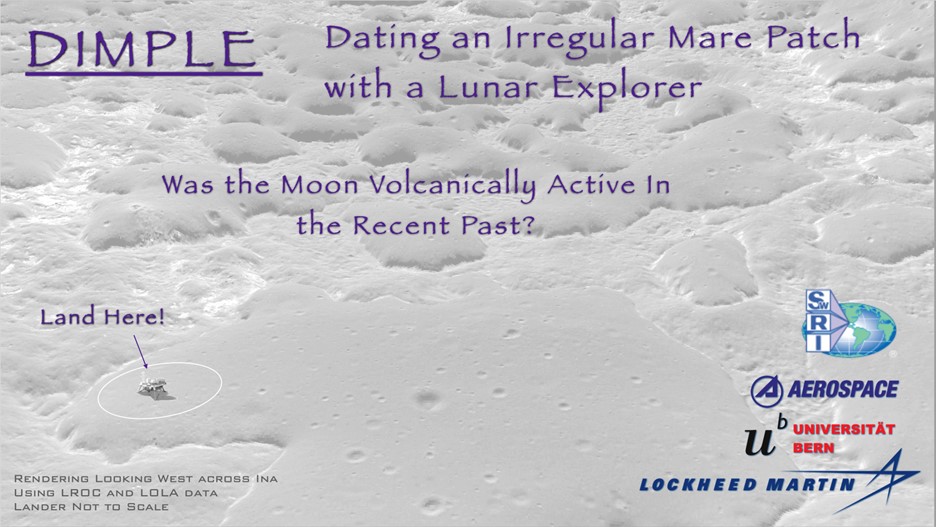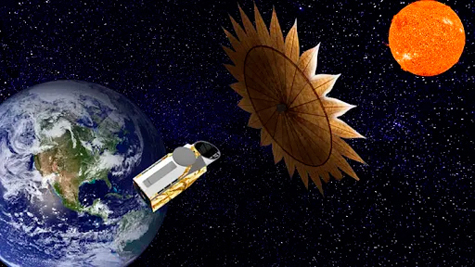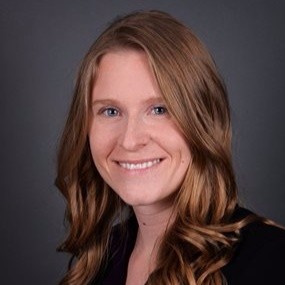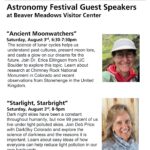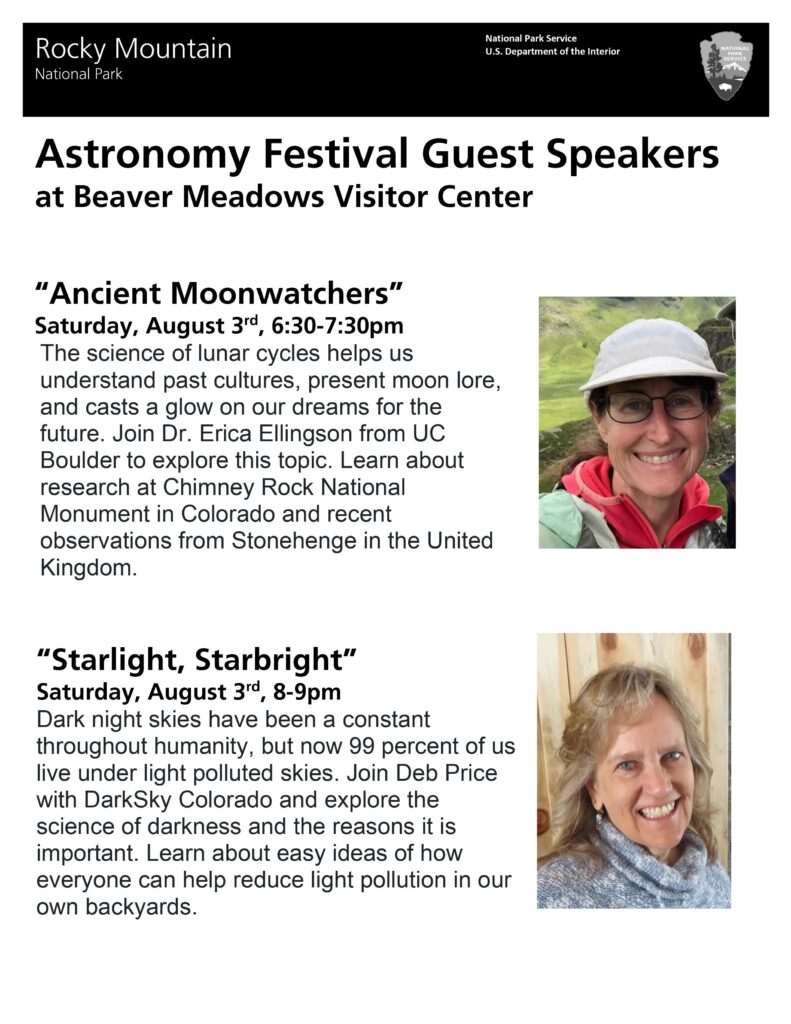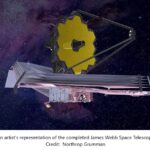Astronomy News from Estes Park Observatory
Check back often to see get posts from EPMO.
June 28, 2025 Observatory Open House / Lecture /Public Star Night
String Theory Is Not Dead – What’s New Over the Last Decade of this “Theory of Everything”
is the subject of this month’s Estes Valley Astronomical Society (EVAS) meeting. EVAS, in conjunction with The Estes Park Memorial Observatory, is offering a free public open house/star night Saturday, June 28th at 7:00 pm. The goal of EVAS is to promote amateur astronomy and education in the Estes Valley.
Join us for an exciting update on the latest developments in string theory, spotlighting the groundbreaking work of physicist Cumrun Vafa and the Swampland Project! Building on previous talks at this observatory, this presentation will explore how Vafa’s pioneering ideas are shaping our understanding of the universe by distinguishing viable quantum gravity theories from those in the “swampland.” Discover how this research may help address cosmological problems and spark new insights across other scientific fields. Perfect for science enthusiasts and curious minds eager to explore the frontiers of cosmology!
John Ensworth is currently a middle and high school teacher at his kid’s school (5 years), Resurrection Christian School, in
Loveland. Previously, he was the Principal Investigator of the NASA Science Mission Directorate Independent Education Product Review for 17 years. His position at the Institute for Global Environmental Strategies had him responsible for conducting reviews and helping with NASA education and outreach efforts with products that are scientifically accurate and appropriate for the educational audience they are intended for. In the 90s, Mr. Ensworth was a masters student and a PhD candidate in meteorology at the University of Oklahoma. He teaches physics and mathematics at several online universities. He earned undergraduate degrees in physics and astronomy, and geography and meteorology with an emphasis in math and computer science. He is the owner and operator of the Cherrywood Observatory in Longmont, CO.
The observatory is just north of the high school at 1600 Manford Ave. Park in the teacher’s parking lot between the high school and the observatory. The doors will open at 7:00 pm and the meeting will start at 7:30 pm. The presentation, including a question and answer period, lasts about 90 minutes. After the presentation, weather permitting, we will look through our 16-inch dome telescope at various celestial objects.
May 31st Observatory Open House / Lecture /Public Star Night
DIMPLE:
An Experiment to Determine if the Moon was Volcanically Active in the Geologically Recent Past
Is the subject of this month’s Estes Valley Astronomical Society (EVAS) meeting. EVAS, in conjunction with the Estes Park Memorial Observatory, is offering a free public lecture on Saturday, May 31, 2025, at the Estes Park Memorial Observatory. The goal of EVAS is to promote amateur astronomy and education in the Estes Valley.
The ground-breaking DIMPLE (Dating an Irregular Mare Patch with a Lunar Explorer) experiment will for the first time send a rock-dating instrument to resolve a scientific mystery on the Moon. The objective of DIMPLE is to date rocks from within the 3×2 km volcanic caldera of a shield volcano called Ina. The rough interior of Ina, referred to as an irregular mare patch, is remarkable for its scarcity of craters from meteoroid impacts. Taken at face value, the relatively low density of craters implies a surface age of 33 ± 2 million years. If the Moon was volcanically active this recently, it would require a profound reassessment of our understanding of how small planets like the Moon retain heat over the eons. By comparison, the youngest volcanic rocks from the Moon that have yet been experimentally dated are 2000 million years old. An alternative explanation for the anomalously low crater density posits that Ina is a chilled magmatic foam, the vesicularity of which favors crumbling rather than cratering during meteoroid impacts. If vesicularity can make a ~3700 million year old landform appear to be a hundred times younger, it begs the question of what other age estimates based on crater density of planetary surfaces, from anywhere in the inner Solar System, can also be wildly inaccurate. DIMPLE was selected by NASA for a flight to the Moon in 2028.
The DIMPLE payload includes (i) the CODEX (Chemistry, Organics, and Dating Experiment) instrument, (ii) a sample-handling system including an arm for gripping rocks from the lunar surface, and (iii) a rover-mounted rake for collecting rock samples from farther afield. CODEX works by analyzing hundreds of tiny spots over rock samples about an inch across, using two different laser-based techniques to measure the abundances of many elements and rubidium and strontium isotopes. CODEX data will enable dating by determining how much strontium has accumulated from radioactive decay of rubidium and, by mapping elemental composition, will permit the identification and interpretation of the rock types sampled at Ina.
Our guest speaker for this public star night will be Dr. F. Scott Anderson. He is the Principle Investigator of DIMPLE. He will share the story of the development of the CODEX dating technique, the science to be accomplished at Ina, and the pathway to flight in 2028. Scott 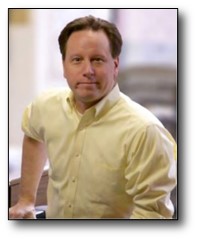 has been a strong proponent of the decade-long effort to make in-situ chronology measurements a reality. He has developed three prototype dating instruments and is an expert in laser processes, laser development, and resonance ionization, in addition to having built multiple mass spectrometers. His research portfolio includes science investigations in the areas of geochronology, geophysical/tectonic formation of Valles Marineris (Mars), heat flow and gravity studies of Venus, and the discovery of chlorides on Mars via thermal infrared spectroscopy. He has worked with data from Mars missions and has won awards for excellence from NASA.
has been a strong proponent of the decade-long effort to make in-situ chronology measurements a reality. He has developed three prototype dating instruments and is an expert in laser processes, laser development, and resonance ionization, in addition to having built multiple mass spectrometers. His research portfolio includes science investigations in the areas of geochronology, geophysical/tectonic formation of Valles Marineris (Mars), heat flow and gravity studies of Venus, and the discovery of chlorides on Mars via thermal infrared spectroscopy. He has worked with data from Mars missions and has won awards for excellence from NASA.
The observatory is just north of the high school at 1600 Manford Ave. Park in the teacher’s parking lot between the high school and the observatory. The doors will open at 7:00 pm and the meeting will start at 7:30 pm. The presentation, including a question and answer period, lasts about an hour. After the presentation, weather permitting, we will look through our 16-inch dome telescope at various celestial objects.
March 29, 2025 Open House EVAS Lecture – NASA’s Next Great Observatory by Dr. Laura Coyle
The Estes Valley Astronomical Society (EVAS) is offering a free public lecture on Saturday, March 29th, at the Estes Park Memorial Observatory. EVAS’s goal is to promote amateur astronomy and education in the Estes Valley.
The Habitable Worlds Observatory is a large infrared/optical/ultraviolet space telescope recommended by the National Academies’ Pathways to Discovery in Astronomy and Astrophysics for the 2020s. HWO is a concept for a mission that would search for and characterize habitable planets beyond our solar system. The mission’s primary objective would be to identify and directly image at least 25 potentially habitable worlds. It would then use spectroscopy to search for chemical “biosignatures” in these planets’ atmospheres, including gasses such as oxygen and methane, which could serve as critical evidence for life. The observatory would introduce new capabilities to study the universe with unprecedented sensitivity and resolution, giving us important new insights into the evolution of cosmic structures, including how galaxies form and develop over time. – NASA
Our speaker is Dr. Laura Coyle, a Sr. Principal Optical Engineer at BAE Systems, Space & Mission Systems, Inc. She has served as the Principal Investigator for the Ultra-Stable Large Telescope Research and Analysis (ULTRA) series of programs over the last five years. Dr. Coyle supports a range of opportunities, from internal research and development efforts to flight programs. She was a member of the team responsible for the alignment and performance characterization of the Operational Land Imager 2 instrument for the Landsat-9 mission, as well as a member of the optical test team and on-orbit commissioning team for the James Webb Space Telescope. Dr. Coyle also serves as the Civil Astrophysics Technology Initiative lead, overseeing technology development for ultra-stable optical systems and general astrophysics missions. Dr. Coyle completed her BA in Physics and Applied Mathematics at Colgate University, followed by her MS and PhD in Optical Sciences at the University of Arizona’s Wyant College of Optical Sciences.
The observatory is just north of the high school at 1600 Manford Ave. Park in the teacher’s parking lot between the high school and the observatory. The doors will open at 7:00 pm, and the meeting will start at 7:30 pm. The presentation, including a question-and-answer period, lasts about an hour. After the presentation, weather permitting, we will look through our new 16 inch dome telescope at various celestial objects.
October 26th. Observatory Public Night Navigating Nuclear Waste by John Ensworth
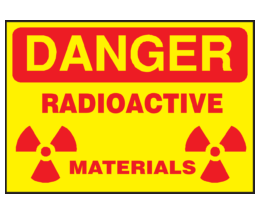 Nuclear Semiotics: Navigating the Science of Nuclear Waste
Nuclear Semiotics: Navigating the Science of Nuclear Waste
is the subject of this month’s Estes Valley Astronomical Society (EVAS) meeting. In conjunction with The Estes Park Memorial Observatory (EPMO), EVAS is offering a free public open house/star night at the observatory on Saturday, October 26th, 2024. The goal of EVAS is to promote amateur astronomy and education in the Estes Valley.
Nuclear waste poses one of the most profound challenges for humanity—not just in terms of safe storage, but in ensuring future generations understand the dangers long after we’re gone. How do we communicate the risks of radioactive materials that remain hazardous for tens of thousands of years?
In this month’s talk, we’ll dive into the science and history of nuclear waste storage, exploring the innovative and sometimes surreal strategies proposed to warn distant future civilizations about these invisible dangers. From the early days of nuclear energy to modern-day proposals, discover the unique intersection of science, communication, and the distant future in a discussion that is as thought-provoking as it is urgent. Be prepared to create your communication solution!
Whether you’re a science enthusiast, a student, or just curious about the future of our planet, this event promises to leave you with new insights into one of the most intriguing challenges of our time.
John Ensworth is a middle and high school teacher at his kid’s school, Resurrection Christian School, in Loveland. Previously, he was a Principal Investigator of the NASA Science Mission Directorate Independent Education Product Review for 17 years. His position at the Institute for Global Environmental Strategies had him responsible for conducting reviews and helping with NASA education and outreach efforts with products that are scientifically accurate and appropriate for the educational audience they are intended for. In the 90s Mr. Ensworth was a masters student and a PhD candidate in meteorology at the University of Oklahoma. He teaches physics and mathematics at several online universities. He earned undergraduate degrees in physics and astronomy, and geography and meteorology with an emphasis in math and computer science. He is the owner and operator of the Cherrywood Observatory in Longmont, CO.
The EPMO is just north of the high school at 1600 Manford Ave. Park in the teacher’s parking lot between the high school and the observatory. The doors will open at 7:00 pm and the meeting will start at 7:30 pm. The presentation, including a question-and-answer period, lasts about an hour. After the presentation, weather permitting, we will look through our 16-inch dome telescope at various celestial objects.
Aucust 31st. Observatory Public Night Space Exporation at LMA by Ari Vogel
Deep Space Exploration at Lockheed Martin Space Division
By Ari Vogel
Is the subject of this month’s Estes Valley Astronomical Society (EVAS) meeting. EVAS, in conjunction with The Estes Park Memorial Observatory, is offering a free public open house and lecture on Saturday, August 31st, 2024. The goal of EVAS is to promote amateur astronomy and education in the Estes Valley.
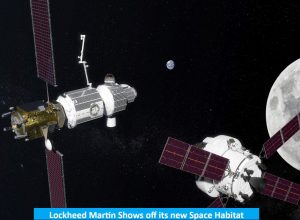
Lockheed Martin Shows Off Its New Space Habitat
Description – What will space exploration and activities look like in the future?
Whether it’s going to the Moon and Mars or investigating the origins of life, Lockheed Martin Deep Space Exploration (DSE) leads the way. It operates at the intersection of mission complexity and uncertainty. The DSE team’s robotic spacecraft exploration heritage, in both past and current missions, is at the forefront of this endeavor. The speaker will discuss the DSE approach to mission development using the OSIRIS-REx and the Mars Sample Return missions to illustrate how this is accomplished.
Our speaker this month is Mr. Ari Vogel. Mr. Vogel is the Director of Deep Space Exploration at Lockheed Martin Space. In this capacity, he is responsible for execution and growth in robotic deep space exploration markets, providing customer astonishment, and developing and implementing strategies for long-term customer and business success. He brings 20 years of space systems experience to the organization.
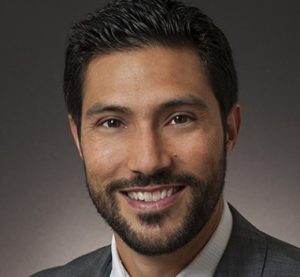
Ari is responsible for some of the well-known spacecraft exploring, or soon to be exploring, our solar system and studying the universe. These include OSIRIS-REx, Mars Sample Return, DAVINCI, VERITAS, Janus, Lunar Trailblazer, Dragonfly, Juno, Lucy, MAVEN, MRO, Hubble, and Mars Odyssey.
Mr. Vogel is a passionate people leader and has made significant contributions to developing a talent pipeline via new employee programs and engagement. Mr. Vogel graduated with Honors from Santa Clara University with a Master of Science in Engineering Management and Cum Laude from Arizona State University with a Bachelor of Science in Electrical Engineering. He enjoys substitute teaching, coaching and exploring our world with his wife and two boys.
The observatory is just north of the high school at 1600 Manford Avenue. Please park in the teacher’s parking lot adjacent to the observatory. The doors will open at 7:00 pm and the meeting will start at 7:30 pm. The presentation, including a question-and-answer period, lasts about an hour. After the presentation, weather permitting, we will look through the telescope at various celestial objects. Information about the meeting can be found on the observatory website at: www.AngelsAbove.Org
Astronomy Festival Guest Speakers at Beaver Meadows Visitors Center
July Observatory Public Night – Moon Missions Update By Dr. Suzanne Metlay
Moon Mission Update 2024
By Dr. Suzanne Metlay
The Estes Valley Astronomical Society (EVAS) meeting. In conjunction with the Estes Park Memorial Observatory, EVAS is offering a free public open house and lecture on Saturday, July 27, 2024. EVAS aims to promote amateur astronomy and education in the Estes valley.
As the United States gets closer to sending Artemis 2 astronauts to lunar orbit in 2025, several nations and private companies are working together or on their own to go to the Moon. Let’s look at recent and upcoming non-NASA missions to lunar orbit and the Moon’s surface. The Lunar Gateway space station is underway; find out who’s involved and who gets to walk on the Moon next.
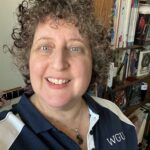 Suzanne Metlay, Ph.D. is full-time faculty in Earth & Space Sciences Teacher Education at Western Governors University, a fully online non-profit university founded in 1997 by 19 governors of western states, including Colorado. Previously, Suzanne taught astronomy and geology at Front Range Community College in Longmont and Fort Collins, was Operations Director for Secure World Foundation in Superior, and served as Education Programs Manager at CU-Boulder’s Fiske Planetarium. Currently, Suzanne is a past President of the Teacher Education Division of the National Association of Geoscience Teachers and serves on the Advocacy Committee.
Suzanne Metlay, Ph.D. is full-time faculty in Earth & Space Sciences Teacher Education at Western Governors University, a fully online non-profit university founded in 1997 by 19 governors of western states, including Colorado. Previously, Suzanne taught astronomy and geology at Front Range Community College in Longmont and Fort Collins, was Operations Director for Secure World Foundation in Superior, and served as Education Programs Manager at CU-Boulder’s Fiske Planetarium. Currently, Suzanne is a past President of the Teacher Education Division of the National Association of Geoscience Teachers and serves on the Advocacy Committee.
Suzanne has a BA in History and Science from Harvard University and a PhD in Geology and Planetary Science from the University of Pittsburgh. She was awarded the Antarctica Service Medal from the Department of the Navy and National Science Foundation for fieldwork conducted as a participant in the Antarctic Search for Meteorites (ANSMET) in 1991.
The observatory is just north of the high school at 1600 Manford Ave. Park in the teacher’s parking lot adjacent to the observatory. The doors will open at 7:00 pm and the meeting will start at 7:30 pm. The presentation, including a question-and-answer period, lasts about an hour. After the presentation, weather permitting, we will look through the telescope at various celestial objects.
“Oreo Black Holes” – Is it possible for an advanced civilization to live inside a black hole ?
That Is the subject of this month’s Estes Valley Astronomical Society (EVAS) meeting. In conjunction with The Estes Park Memorial Observatory (EPMO), EVAS is offering a free public open house/star night on June 29th, 2024 at the observatory. The goal of EVAS is to promote amateur astronomy and education in the Estes Valley.
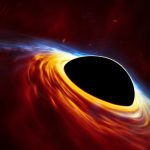
Join astronomer, EVAS member and science communicator, John Ensworth as we embark on a fascinating journey through the enigmatic realm of black holes. In this presentation, we will delve into the current state of our understanding of black holes, unraveling their mind-boggling properties and the mysteries they hold. But that’s not all; we will also explore an intriguing and speculative concept: the possibility of a habitable region within a black hole, where an advanced civilization might thrive. The question that lingers: Can we ever meet them and reveal their existence to the world?
In the first part of the talk, we will examine the current state of black hole science, discussing how these cosmic behemoths form, their extreme gravitational pull, and the mind-warping phenomenon of spacetime distortion. We will explore the groundbreaking discoveries that have shaped our understanding of black holes, including the recent Event Horizon Telescope’s groundbreaking image of the supermassive black holes at the center of the M87 galaxy and our own galaxy’s A*.

Speaker John Ensworth
John Ensworth is currently a middle and high school teacher at his kid’s school, Resurrection Christian School, in Loveland. Previously, he was a Principal Investigator of the NASA Science Mission Directorate Independent Education Product Review for 17 years. His position at the Institute for Global Environmental Strategies had him responsible for conducting reviews and helping with NASA education and outreach efforts with products that are scientifically accurate and appropriate for the educational audience they are intended for. In the 90’s Mr. Ensworth was a masters’ student and a PhD candidate in meteorology at the University of Oklahoma. He teaches physics and mathematics at several online universities. He earned undergraduate degrees in physics and astronomy, and geography and meteorology with an emphasis in math and computer science. He is the owner and operator of the Cherrywood Observatory in Longmont, CO.
The Estes Park Memorial Observatory is just north of the high school at 1600 Manford Ave. Park in the teacher’s parking lot between the high school and the observatory. The doors will open at 7:00 pm and the meeting will start at 7:30 pm. The presentation, including a question and answer period, lasts about an hour. After the presentation, weather permitting, we will look through our 16-inch dome telescope at various celestial objects.
NASA’s OSIRIS-REx Mission: Early Results from Asteroid Sample Analysis by Dr. Vicky Hamilton
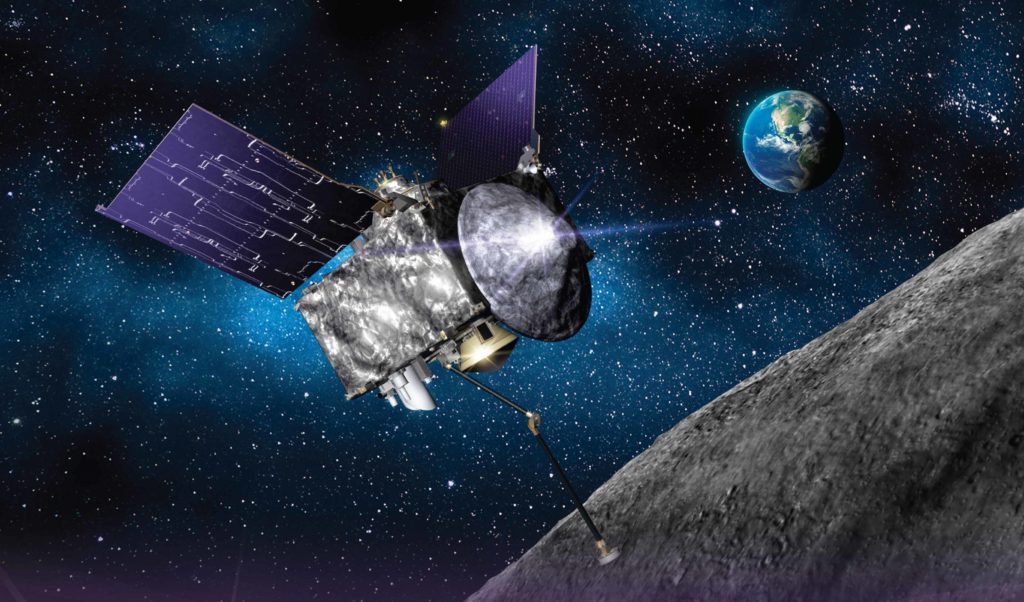
OSIRIS-Rex Approaches Asteroid Bennu — Credit Lockheed Martin
Is the subject of this month’s Estes Valley Astronomical Society (EVAS) meeting. EVAS in conjunction with The Estes Park Memorial Observatory is offering a free public open house/star night on Saturday, May 25th, 2024. The goal of EVAS is to promote amateur astronomy and education in the Estes Valley.
The primary objective of NASA’s Origins-Spectral Interpretation-Resource Identification-Security-Regolith Explorer (OSIRIS-REx) mission is to explore and return a pristine sample from the asteroid Bennu to help scientists understand the origin and evolution of our solar system and, ultimately, how life began. After arriving at Bennu in 2018, the spacecraft gathered data to understand the asteroid and select a sampling site. A sample was collected successfully in October 2020 and OSIRIS-REx began its return to Earth in May 2021. In September of 2023, the sample was successfully returned to Earth — the mission science team has begun analysis of this incredible sample and this presentation will describe early results.
.
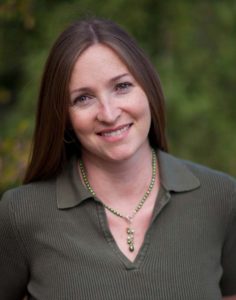
Dr. Vicky Hamilton Southwest Research Institute
Our returning speaker this month is Dr. Vicky Hamilton. She is an Institute Scientist at Southwest Research Institute (SwRI) in Boulder, Colorado. She received her Ph.D. from Arizona State University and her A.B. from Occidental College. She is a geologist specializing in laboratory spectroscopy of minerals, meteorites, and returned samples, numerical modeling of infrared spectra, and infrared remote sensing of planetary surfaces to determine composition and physical properties. She has been a science team Co-Investigator and Deputy Instrument Scientist/Principal Investigator on NASA planetary science flight missions to Mars and asteroids, including Mars Global Surveyor, 2001 Mars Odyssey, Mars Science Laboratory, OSIRIS-REx, and Lucy. She is also the Chair of the Mars Exploration Program Analysis Group (MEPAG), a research community-based, interdisciplinary forum providing the scientific input needed to plan and prioritize NASA’s Mars exploration activities.
The observatory is just north of the high school at 1600 Manford Ave. Park in the teacher’s parking lot between the high school and the observatory. The doors will open at 7:00 pm and the meeting will start at 7:30 pm. The presentation, including a question and answer period, lasts about an hour. After the presentation, weather permitting, we will look through our new 16-inch dome telescope at various celestial objects.
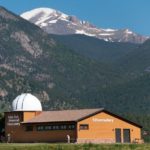
Estes Park Memorial Observatory
Information about the meeting can be found on the observatory website at: www.AngelsAbove.Org.
Unveiling the Origins of the Universe with Webb by Erin Wolf
The Estes Valley Astronomical Society is offering a free public lecture on Saturday, April 27th, 2024 at the Estes Park Memorial Observatory. The goal of EVAS is to promote amateur astronomy and education in the Estes Valley.
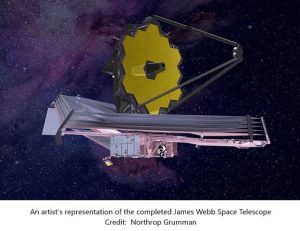
The James Webb Space Telescope (JWST) is the largest and most complete space-based observatory ever built. It is currently at its observing spot, nearly one million miles from Earth.
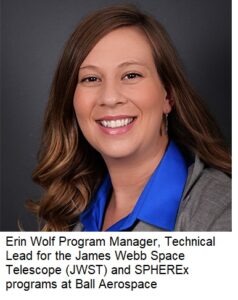 Our speaker is Erin Wolf former Program Manager and Technical Lead for the JWST at BAE Systems, Inc. (formerly Ball Aerospace). Erin’s presentation recounts the JWST design and build lifecycle, with updates from newly released images. Less than two years into its mission, JWST has broken the record for the oldest galaxy ever observed by nearly 100 million years. It is seeing some of the first galaxies to form after the big bang 13.8 billion years ago. And some of those galaxies are bigger than our theories say they should be at such a young age of the universe! So what do we know now about the origins of our Universe that Webb has illuminated? And what can a new mission, SPHEREx, tell us about what drove early universe Inflation?
Our speaker is Erin Wolf former Program Manager and Technical Lead for the JWST at BAE Systems, Inc. (formerly Ball Aerospace). Erin’s presentation recounts the JWST design and build lifecycle, with updates from newly released images. Less than two years into its mission, JWST has broken the record for the oldest galaxy ever observed by nearly 100 million years. It is seeing some of the first galaxies to form after the big bang 13.8 billion years ago. And some of those galaxies are bigger than our theories say they should be at such a young age of the universe! So what do we know now about the origins of our Universe that Webb has illuminated? And what can a new mission, SPHEREx, tell us about what drove early universe Inflation?
Erin is currently a program manager for the SPHEREx program at Ball Aerospace. SPHEREx is NASA’s middle-class explorer program (MIDEX) Infrared observatory that will survey the sky in optical and near-infrared light which serves as a powerful tool for answering cosmic questions. In her role, Wolf fosters the mentorship of junior engineers and provides growth opportunities for all career levels.
Before joining BAE Systems, Inc. in 2017, Wolf worked on Webb at NASA’s Goddard Space Flight Center for eight years. She also contributed to Landsat 9’s TIRS-2 instrument and to the fourth Hubble Servicing Mission. She has worked on many payloads in the past, with an emphasis on cryogenic systems and IR detectors
Wolf is a member of the Society for Women Engineers (SWE) and has been involved with the International Society for Optics and Photonics (SPIE). She has received various awards for her work on Webb, including the NASA Silver Achievement Medal, Group (2014) and NASA Exceptional Public Achievement Medal, Individual (2023), and was recognized as a Mentor of the Quarter at Ball. Wolf is a lifetime Girl Scout and Gold Award recipient.
Wolf received a B.S. in physics from the University of Puget Sound in Tacoma, WA, and attended the Systems Engineering master’s program at Johns Hopkins University, MD.
The Estes Park Memorial Observatory is just north of the high school at 1600 Manford Ave. Park in the teacher’s parking lot between the high school and the observatory. The doors will open at 7:00 pm and the meeting will start at 7:30 pm. The presentation, including a question and answer period, lasts about an hour. After the presentation, weather permitting, we will look through our 16-inch dome telescope at various celestial objects.


